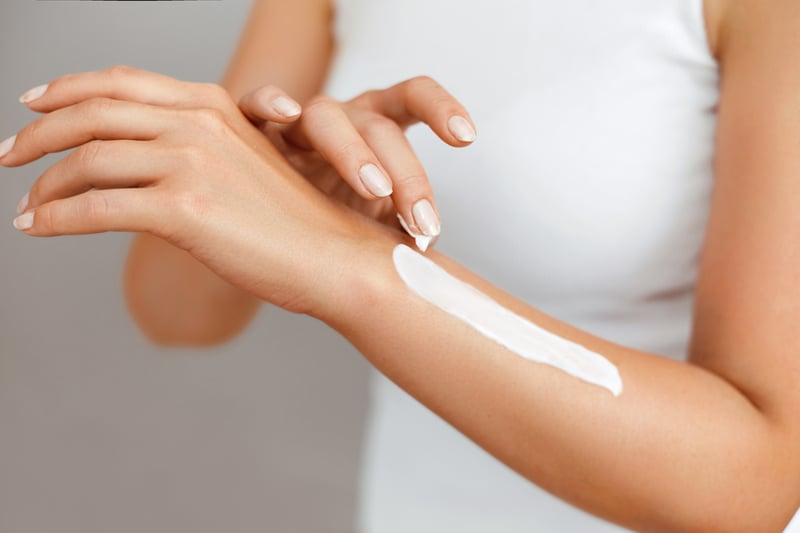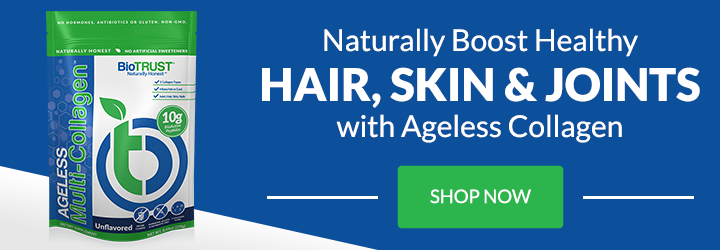What Are Phthalates & 7 Scary Places They’re Hiding

What items do you use every single day? Shampoo, workout gear… what about your car? I’m sure whatever your personal everyday items are, they all have one thing in common. They all contain phthalates.
Phthalates (pronounced tha-leits) are a large family of chemicals, sometimes called plasticizers, which are used to soften and strengthen plastics and increase their flexibility, transparency, durability, and longevity. Essentially, they are the chemicals that make a piece of plastic move or bend, rather than crack and break. These phthalates, or plasticizers, are used in a wide array of products. In fact, they are used in so many products, they are regularly called the “everywhere chemical.”
Phthalates were first introduced in the 1920s to replace earlier forms of additives that made plastics more flexible. By 1931, the phthalate industry took off with the commercial availability of polyvinyl chloride (PVC) and the development of di-2-ethylhexyl phthalate (DEHP). Now, according to the Environmental Protection Agency, more than 470 million pounds of phthalates are produced each year. 1
Potential Phthalate Health Risks
With phthalates being so commonly used, they must not pose any risks, right?
Well, not necessarily. Many phthalates come with health risks that are increasingly worrying to scientists and researchers.
Phthalates are known synthetic endocrine disruptors. According to the EPA, “Endocrine disruptors act by interfering with the biosynthesis, secretion, action, or metabolism of naturally-occurring hormones.” 2 Given the importance of hormones, there is concern in the scientific community over the potential for endocrine disruptors to adversely affect children’s health, particularly in reproduction, development, and behavior.
In experimental studies, exposure to some phthalates may cause a variety of reproductive tract abnormalities. 3 For example, phthalate exposure has been associated with reproductive defects and the suppression of hormones, which has led scientists to refer to phthalates as “gender-bending” chemicals. 4,5
Additionally, exposure to some phthalates have been correlated with neurodevelopmental effects. Studies have reported associations between prenatal exposure to certain phthalates and behavioral deficits, including effects on attention, conduct, and social behaviors. 6
Even more, one of the many ways exposure to phthalates can occur is from breathing in air that contains phthalate vapors or indoor dust contaminated with phthalate particles. Several studies reported links between potential phthalate exposure in the home and risk of asthma and allergies in children. 7,8
But phthalate exposure doesn’t just affect children. Phthalates are also associated with several diseases in adults due to their endocrine-disrupting potential. One of the most common disorders associated with this is obesity. 9 Phthalates can act as endocrine-disrupting chemicals, which have the ability to stimulate adipogenesis (the formation of fat cells) and fat storage and thus increase the chances for obesity. Further, phthalates have been associated with allergies, asthma, wheezing, hay fever, itchy rashes, and eczema in adults. 10
Likewise, phthalates present in cosmetics has increasingly become an area of concern after environmental groups reported that over 70% of personal care products contained phthalates. 11 A study by the U.S. Centers for Disease Control and Prevention even found that 5% of women between the ages of 20 and 40 had up to 45 times more phthalates in their bodies than researchers initially hypothesized. Women are speculated to be more susceptible to phthalate exposure due to their prevalence in personal-care products.
Listed below are a few of the most commonly used phthalates:
- di-(2-ethylhexyl) phthalate (DEHP)
- dibutyl phthalate (DBP)
- di-n-octyl phthalate (DNOP)
- diethyl phthalate (DEP)
- dimethyl phthalate (DMP)
- benzyl butyl phthalate (BBP)
- diisononyl phthalate (DINP)
- diisobutyl phthalate (DIBP)
- Di-n-pentyl phthalate (DPENP)
- di-n-hexyl phthalate (DHEXP)
- dicyclohexyl phthalate (DCHP)
- Polyvinyl Chloride (PVC)
So now the important question becomes, where are phthalates hiding?
6 Scary Places Phthalates Are Hiding
1. Personal Care Products
Some of the most common items we use every day are personal care products, and phthalates can be found in almost all of them. Making matters worse, phthalates can be absorbed into the body through the skin.
The FDA’s 2010 Survey of Cosmetics for Phthalate Content found that many well-known branded personal care items contain phthalates. 12 These items include things such as shampoos, oils, powders, body washes, soaps, lotions, deodorants, hair sprays, mousses, nail polishes, aftershaves, makeup, and more.
Unfortunately, it may be hard to know if these products contain phthalates since they are rarely listed as ingredients on labels. Similarly, cosmetic products and ingredients, except for color additives, are not subject to FDA approval before they go to market. 13
2. Clothing
Clothing from some of the most popular brands have tested very high for concentrations of phthalates, meaning the chemical comprised up to 38% of their weight. 14 Additionally, numerous reports on chemical content in sportswear found that sportswear from major brands contained synthetic fabrics containing chemicals like phthalates. This is because chemical finishes are applied to nearly every synthetic fabric to boost wicking performance, make gear stain repellent, or to avoid unpleasant sweat odors. Phthalates have also been found in jeans, t-shirts, underwear, raincoats, and artificial leathers just to name a few.
3. Food
For many phthalates, a major route of exposure is food ingestion. Food can get exposed to phthalates during manufacturing, processing, storage, and transportation. These chemicals can also be part of the food packaging process through contact with food preparation gloves, plastic containers, tubing used for liquids, lids, can linings, dishware, and utensils. Research has found that foods high in fat, such as dairy products, fish, seafood, and oils, absorb more phthalates during processing. 15
4. Cleaners
Most of us keep our houses stocked with a vast supply of cleaners, many of which are loaded with chemicals. Carpet shampoo, all-purpose household cleaners, window- and wood-cleaning products, detergents, dryer sheets, dish soap, disinfectants, stain removers, and most other cleaning products all contain phthalates.
5. Medical Devices
Another area of concern is that many medical devices, such as catheters and intravenous equipment, are made of phthalates, including ones used in neonatal intensive care units. In 2002, the FDA recommended that healthcare professionals avoid using IV bags, tubes, and other devices containing the phthalate DEHP as “phthalates can leach out of the devices into stored liquids, like blood, plasma, and intravenous fluids.” 16
6. Fragrances
Manufacturers don’t have to disclose the individual components and ingredients in fragrances, so you probably won’t find phthalates on a label. 17,18 If you spot “fragrance” on a label, there is a high probability phthalates are present. However, choosing unscented products is no guarantee they will be phthalate-free either because products often contain masking fragrances that may contain the chemical.
7. House Materials
Colorless, odorless phthalates are not only cost effective but also highly suitable for many products due to their durability, flexibility, weather resistance, and ability to withstand high temperatures. Some home products that contain phthalates are shower curtains, hoses, wallpaper, vinyl blinds, adhesives, plastic plumbing pipes, solvents, and vinyl flooring.
What are Phthalates: A Recap
Essentially phthalates are everywhere. Their widespread presence makes them almost completely unavoidable, and there are many instances when we can’t control our phthalate exposure. Regardless, the easiest way to limit exposure to phthalates is to reduce your use of plastic. Of course, this, like many things, is much easier said than done.
Luckily, certain companies are taking charge and indicating on their packaging that they are phthalate free. Even more, Congress has made steps toward regulating the use of certain phthalates. For instance, in July 2008, the U.S. Congress passed legislation “banning six phthalates from children’s toys and cosmetics.” Later in June 2015, Congress permanently banned 3 more types of phthalates in any amount greater than 0.1% from children’s toys and specific childcare products.
Although the FDA and the American Chemistry Council have stated that “phthalates used in commercial products do not pose a risk to human health,” many scientists agree that research is still limited in this area, and there is still a lot to learn. Nevertheless, despite limited human research, consumer awareness and action continue to have a big influence on companies voluntarily reducing the use of phthalates in products.





 7 Signs Your Body is Seriously Low on Collagen (not just wrinkles)
7 Signs Your Body is Seriously Low on Collagen (not just wrinkles) Health Expert: "Turmeric Doesn't Work (unless...)"
Health Expert: "Turmeric Doesn't Work (unless...)" 3 Warning Signs Your Probiotic Supplement is a Total Waste
3 Warning Signs Your Probiotic Supplement is a Total Waste

